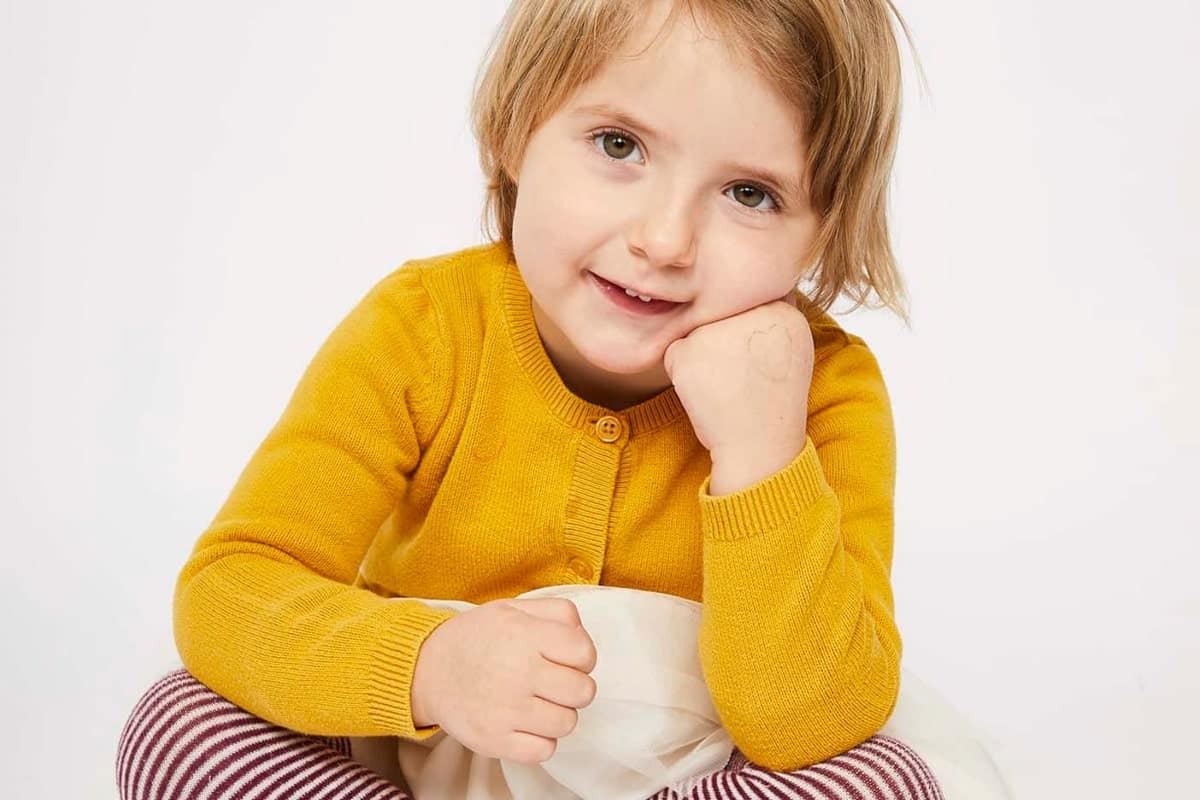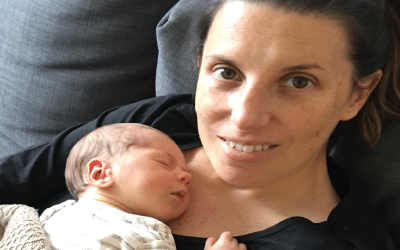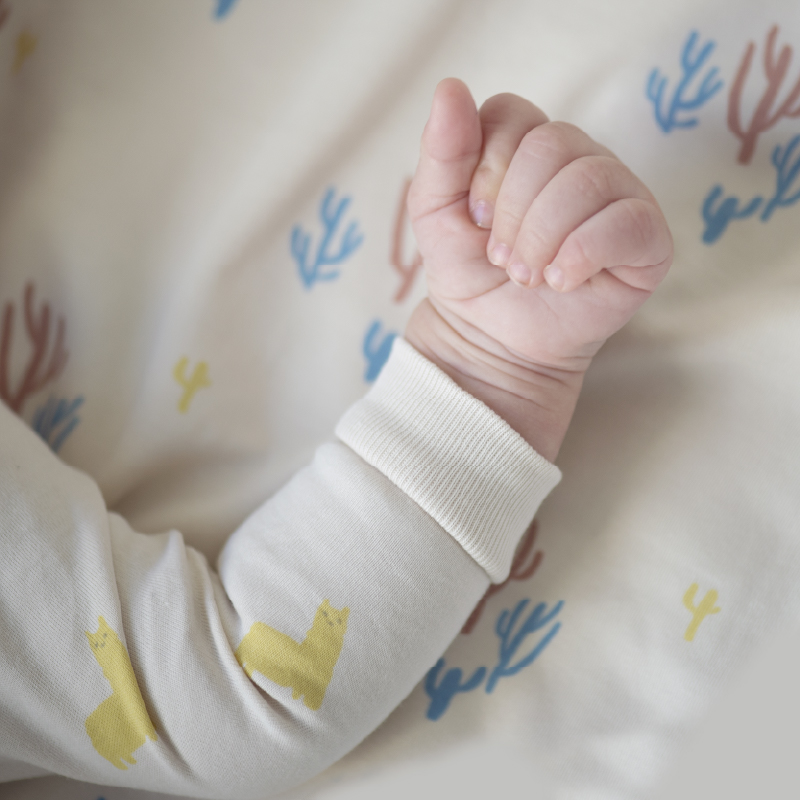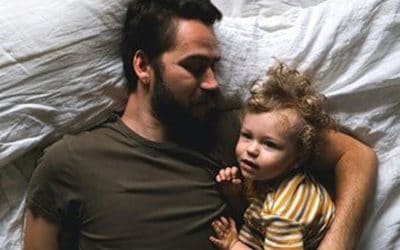As your child gets older, it can be tempting to push back their bedtime. But resist the urge! Your toddler needs an early bedtime for their health…and yours. Find out why it is important and get the answers to your most frequent questions on this topic.
Your Rockin’Blinks Cheat Sheet:
- Bedtime should be between 6-8pm.
- Maintain a consistent bedtime, including on weekends.
- Bedtimes later than 9pm are associated with difficulty falling and staying asleep, insufficient sleep, attention and behavior problems, and a greater risk of weight gain.
“At what hour ought a child to be put to bed in the evening?
At six in the winter, and at seven o’clock in the summer. Regularity ought to be observed, as regularity is very conducive to health. It is a reprehensible practice to keep a child up until nine or ten o’clock at night. If this be done, he will, before his time, become old, and the seeds of disease will be sown.”
– From Advice to a Mother on the Management of Her Children, Pye Henry Chavasse, 1869
Wisdom on how to properly care for a child has changed significantly over the years. However, this 150-year-old admonishment to maintain a consistent, early bedtime remains not only unchanged, but is increasingly supported by modern scientific evidence.
How does the body know when to sleep?
What Chavasse observed in the 1800’s was a behavior that was once so natural as to be taken for granted: humans, and young children in particular, become sleepy when the sun sets. The dimming light prompts the brain to begin producing melatonin, the hormone responsible for setting the timing of sleep.
So powerful is the influence of light on our sleep, that by the time an infant is two months old, if artificial light is not used, the baby’s sleep will synchronize with sunset and wake with sunrise. While adults generally fall asleep later in the evening than young children, adults in unindustrialized parts of the world live similarly, going to bed well before midnight and waking around dawn.
Modern life, however, has changed our relationship to the clear cycles of light and darkness. In the 1930’s, scientists conducted a study in an underground cave and discovered that when people live in constant lighting conditions, body rhythms continued to cycle, but people became desynchronized from the day. Without the presence of light first thing in the morning, people were no longer aligned with their environment. They went to bed a little later each night, and woke a little later each morning. Eventually, their main sleep period was happening during the day and wakefulness was happening at night, until the body cycled the entire way around the clock again.
This phenomenon commonly occurs among people who are completely blind: it’s called Non-24-Hour Sleep Wake Disorder.
But it’s equally as important for those of us that spend most of our days indoors and use lots of artificial light at night. We actually trend toward the same disorder. We drift toward staying up later at night and wanting to sleep in longer in the morning. This is because indoor lighting during the day is far weaker than the sun, and far stronger than any moonlight at night. By staying in relatively constant conditions, artificial light is strong enough to delay when the brain starts to make melatonin in the evening. With a delay in the timing of melatonin, a person’s sense of when “night” is, and therefore when to fall asleep, shifts later. And while artificial light delays the feeling of sleepiness for everyone, the effect is strongest on young children.
How does the body know when to wake up?
It may seem as though the body wakes up when we have “slept enough.” But as any seasoned parent can attest, if bedtime is later than usual by an hour or two one night, children absolutely do not sleep an hour or two later into the morning to make up for the late night.
The cause for this is because young children are strong morning types. They are highly perceptive of light, and it doesn’t take much sunlight to create a habitual rise time. For children and adults alike, the first light of the morning tells the body what time to anticipate as the start of the morning again tomorrow. In preparation for that waking time, the core body temperature begins to rise, hormones regulating hunger and blood sugar begin to anticipate the first meal of the day, and blood pressure levels climb from their lower resting point to enable healthy circulation for an active body. Like an employee opening the store before the customers arrive, the anticipated timing of light at the start of the day prepares the body for being active and open for business.
It takes several days with a delayed first light of the day in order to shift these anticipatory actions inside the body. In children, this internal alarm clock is quite strong and persistent. For this reason, consistent bedtimes are extremely important.
If parents can keep the bedroom completely dark, it is possible that children might sleep well past sunrise. But unless this habit is maintained long-term, they’ll revert to waking at their usual time. What this means is that, while there is a wide range in what time parents put little ones to bed, the time they wake in the morning has much less variety, even when looking across cultures on a global scale.
Why is a toddler’s bedtime important?
Later bedtimes mean less sleep. A national Sleep in America poll found that toddlers with a consistent bedtime slept on average 54 minutes longer at night than those with an inconsistent bedtime; toddlers with a bedtime earlier than 9pm slept 78 minutes longer than those with a later bedtime.
Can some children naturally be night owls?
A recent study identified several hundred gene locations associated with an individual’s natural timing of sleep. The researchers then looked at people who had the greatest number of genes related to being a morning person, and compared them with people who had the fewest of these genes. Between the two groups there was only a 25-minute difference in average bedtimes.
Remember how lots of time outside during the day and no artificial light at night keeps the body’s natural sleepy time earlier? A team of researchers examined how outdoor camping with no electronics permitted would affect a group of adults who considered themselves to be night owls. After one week of spending their days outdoors and crawling into bed whenever they felt sleepy, the timing of the participants’ melatonin rise and the time they went to bed had shifted earlier by two hours. Even in infants as young as 6 weeks of age, more time spent in natural daylight results in longer sleep at night.
So yes, genetics can make a difference in when people find it easiest to fall asleep, but the variation isn’t as great as most people assume. Plus, time after time, science confirms what most parents simply know to be true: toddlers are not night owls. Some may have an easier time falling asleep slightly later than their peers, but science is increasingly demonstrating that insufficient sleep, which is more likely to occur with late or inconsistent bedtimes, is a much, much bigger problem than parents typically realize.
So what’s so bad about a late or inconsistent bedtime?
Sleep is a time of healing. The body is physically repaired, difficult emotions are processed and soothed, memories are stored, and mapping of connections within the brain brings about new insights and problem-solving capabilities.
Shortened sleep or inconsistent sleep timing not only deprives us of the host of benefits that sleep provides, but it also disrupts the predictive rhythms that the body relies on to anticipate when to be active, taking in food, and absorbing new information versus when it should be in a state of repair and knowledge consolidation.
One of the clearest consequences of poor bedtimes is weight problems. Similarly to adults, when young children are experimentally sleep deprived, they consume more calories –particularly in the form of carbs and sugar — on the day they are sleep deprived as well as on the day when they catch up on sleep. Lack of sleep also slows metabolism, raises the hormone ghrelin that signals hunger, and decreases the hormone leptin that helps us to feel full.
Not surprisingly then, poor sleep patterns are consistently connected to weight problems later on in life. The remarkable finding is just how interconnected sleep and weight are.
And why is sleep so important for a toddler anyway?
-
Effects on school performance
One of the most critical areas in your toddler’s life that is impacted by a loss of sleep is learning and school performance particularly because sleep is so essential for memory. During sleep, memories are stored, consolidated, and sorted to allow for finding patterns.
Studies show that this is true for babies, toddlers and even older children. When three-month-old infants are shown a new face, they can remember the face only if they nap before it is shown to them again. Six-month-old infants can recognize new words, but only when sleep allows them to store the memory of the word before it is introduced again. Elementary students showed a 25% improvement in their puzzle-solving ability when they were able to sleep in between seeing the puzzle for the first time and being asked to solve it, versus students who had no sleep in between.
Long term loss of sleep has an even greater impact. A study of over 11,000 children found that those with irregular bedtimes at three years of age had poorer scores in math and reading at seven years of age.
-
Effects on mood and behavior
Sleep also affects your toddler’s mood and behavior. While adults become lethargic when tired, children often become more active and energetic. A study of over 10,000 children in the UK found that when children continued to have inconsistent bedtimes across their early years, they were more likely to have behavioral problems at 7 years of age. If parents switched to consistent bedtimes, there was a smaller likelihood of behavioral problems. Another study looking at over 40,000 Japanese children found similar results, with either late (after 9pm) or inconsistent bedtimes in toddlers predicting behavioral problems when they reached grade school.
-
Appearance of TDAH
Sleep is particularly relevant for the growing number of children diagnosed with ADHD. Studies show that as many as 70% of children with ADHD also have difficulty sleeping. Treating the sleep problem has been shown to reduce the child’s symptoms of ADHD, whereas restricting sleep in children already diagnosed with ADHD causes the symptoms to become worse.
So what can I do to help my toddler go to bed earlier?
If you’ve gotten into a late or inconsistent bedtime routine with your toddler, it’s not too late to make a change. Sure, the science behind bedtimes is complex and the consequences of poor sleep habits are far-reaching, but the solution is simple: keep bedtime early and consistent. Before long, you’ll start seeing changes in your toddler and that will motivate you stay on track such as: better rested overall and improved mood and behavior
In order to help your child fall asleep easy at a healthy time, try these tips and tricks:
- Spend as much time as possible outside with access to fresh air and natural light.
- If possible, avoid extracurricular activities late in the afternoon and aim for an early dinner around 6pm.
- Turn off screens at least one hour before bedtime.
- Have a relaxing and consistent bedtime routine where you can be present and not distracted by phones or other screens.
Encouragingly, when children shifted from a late or inconsistent bedtime, they gained many of the long-term benefits of sleep. The best day to start a healthy habit is today.
References
McGraw, K., Hoffmann, R., Harker, C., & Herman, J. H. (1999). The development of circadian rhythms in a human infant. Sleep, 22(3), 303–310. Retrieved from http://www.ncbi.nlm.nih.gov/pubmed/10341380
Roenneberg, T., & Merrow, M. (2016, May 23). The circadian clock and human health. Current Biology, Vol. 26, pp. R432–R443. https://doi.org/10.1016/j.cub.2016.04.011
Pilz, L. K., Levandovski, R., Oliveira, M. A. B., Hidalgo, M. P., & Roenneberg, T. (2018). Sleep and light exposure across different levels of urbanisation in Brazilian communities. Scientific Reports, 8(1), 11389. https://doi.org/10.1038/s41598-018-29494-4
Cave Dwellers, 1938 | The Scientist Magazine®. (n.d.). Retrieved December 1, 2020, from https://www.the-scientist.com/foundations/cave-dwellers-1938-33966
Gooley, J. J., Chamberlain, K., Smith, K. A., Khalsa, S. B. S., Rajaratnam, S. M. W. W., Van Reen, E., … Lockley, S. W. (2011). Exposure to room light before bedtime suppresses melatonin onset and shortens melatonin duration in humans. Journal of Clinical Endocrinology and Metabolism, 96(3), E463-72. https://doi.org/10.1210/jc.2010-2098
Akacem, L. D., Wright, K. P., & LeBourgeois, M. K. (2018). Sensitivity of the circadian system to evening bright light in preschool-age children. Physiological Reports, 6(5), 1–10. https://doi.org/10.14814/phy2.13617
Mindell, J. A., Composto, J., Lee, C., Bhullar, B., & Walters, R. (2014). Development of infant and toddler sleep patterns from real world data on a mobile app. Sleep, 37(June), A312. https://doi.org/10.1111/jsr.12414
Jones, S. E., Lane, J. M., Wood, A. R., van Hees, V. T., Tyrrell, J., Beaumont, R. N., … Weedon, M. N. (2019). Genome-wide association analyses of chronotype in 697,828 individuals provides insights into circadian rhythms. Nature Communications, 10(1), 1–11. https://doi.org/10.1038/s41467-018-08259-7
Wright, K. P., McHill, A. W., Birks, B. R., Griffin, B. R., Rusterholz, T., Chinoy, E. D., … Duncan, W. C. (2013). Entrainment of the human circadian clock to the natural light-dark cycle. Current Biology : CB, 23(16), 1554–1558. https://doi.org/10.1016/j.cub.2013.06.039
Harrison, Y. (2004). The relationship between daytime exposure to light and night-time sleep in 6-12-week-old infants. Journal of Sleep Research, 13(4), 345–352. https://doi.org/10.1111/j.1365-2869.2004.00435.x
Randler, C., Faßl, C., & Kalb, N. (2017). From Lark to Owl: Developmental changes in morningness-eveningness from new-borns to early adulthood. Scientific Reports, 7, 45874. https://doi.org/10.1038/srep45874
Mullins, E. N., Miller, A. L., Cherian, S. S., Lumeng, J. C., Wright, K. P., Kurth, S., & Lebourgeois, M. K. (2017). Acute sleep restriction increases dietary intake in preschool-age children. Journal of Sleep Research, 26(1), 48–54. https://doi.org/10.1111/jsr.12450
Morrissey, B., Taveras, E., Allender, S., & Strugnell, C. (2020, April 1). Sleep and obesity among children: A systematic review of multiple sleep dimensions. Pediatric Obesity, Vol. 15. https://doi.org/10.1111/ijpo.12619
Good sleep is essential for a happy healthy childhood and life. Book a consultation with us now!
Subscribe to our Newsletter and get the latest in sales, sleep information and more











